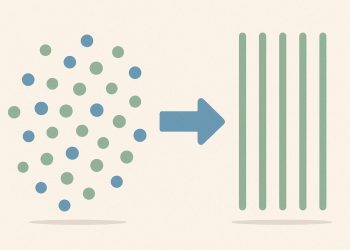GPT-5 offers significant value across industries due to its speed, accuracy, and unified handling of text, code, and images. To maximize its potential, companies should clearly list all rules and goals, use clear dividers, and include brand style in every prompt ensuring faster workflows and consistent brand voice.
What are the best prompt engineering practices for maximizing enterprise value with GPT-5?
To unlock GPT-5’s full enterprise potential, use these prompt engineering strategies:
- Front-load all constraints and outcomes for clarity.
- Separate instructions with structured delimiters (like
###). - Embed system-level style guides in prompts for brand consistency.
These methods boost accuracy, speed, and reliability across industries.
A new wave of prompt engineering guidance has arrived timed with GPT-5’s 2025 debut, and the numbers behind it are already eye-catching. Global consulting firms estimate automation-driven value from the model will exceed $500 billion by 2028, with the sharpest gains expected in healthcare, finance and legal sectors.
What GPT-5 demands from your prompts
Unlike earlier models that asked clarifying questions, GPT-5 executes instructions literally and decisively. Early enterprise users (Amgen, Morgan Stanley, T-Mobile) report higher accuracy, reliability and speed when three core principles are baked into every prompt:
| Principle | Action | Result |
|---|---|---|
| Constraint front-loading | State all constraints and desired outcomes at the top | Minimizes mid-task drift |
| Structured delimiters | Use ### or """ to separate instructions from context |
Improves parsing precision |
| System-level style guides | Embed brand voice, terminologies and banned phrases in system prompts | Enforces consistency at scale |
Brand consistency playbook for GPT-5
-
Explicit style statement
Open the prompt with:
Write in the style of [Brand Name], professional yet friendly, using short sentences, avoiding jargon, and always referring to the product as “X”. -
Negative examples
Include a one-line blacklist: Never use the superlatives “best-in-class” or “cutting-edge”. -
Reusable templates
Document and share winning prompt blocks internally; teams at regulated firms cut rework by 25 % using this approach.
Productivity by the numbers
| Sector | 2025 gain metric | Source |
|---|---|---|
| Language services | +5.4 % productivity (2023-24) | Nimdzi 100 |
| Healthcare | Faster literature analysis & diagnostics | Markets Chronicle |
| Enterprise workflows | Higher accuracy vs GPT-4 in 7/7 tests | Tom’s Guide real-world comparison |
Multimodal is the new baseline
GPT-5 natively processes text, code, images, diagrams and sensor data. Prompting for mixed inputs follows the same rule: fuse everything upfront instead of chaining separate calls. Example:
Instruction: Generate a step-by-step troubleshooting guide for the attached sensor log image.
Constraints: Use bullet points, max 200 words, reference part numbers visible in the image.
Image: [base64 or url]
This single-shot approach reduces latency and hallucinations compared to multi-turn workflows used with GPT-4.
Next steps for teams
- Start with the official OpenAI GPT-5 Prompting Guide
- Run A/B tests measuring brand-tone drift before rolling out widely
- Document reusable prompt templates to cut onboarding time for new team members
With the right prompt discipline, GPT-5 is less a tool update and more a competitive accelerator: organizations mastering these patterns today are positioning themselves for outsized gains tomorrow.
How is GPT-5 prompting different from GPT-4?
GPT-5 interprets instructions more literally and decisively. Early enterprise testers at Amgen report that higher accuracy and reliability now come from stating every constraint and desired outcome up-front; the model no longer asks for clarification. In practice that means:
- Replace open-ended questions with explicit check-lists (e.g., “include disclaimers A, B, C”).
- Specify format, length, and forbidden topics in the first line of the prompt.
- Expect the model to execute in a single pass, so front-load complex logic.
Which prompt template keeps brand voice intact across teams?
A repeatable template that teams at Morgan Stanley, T-Mobile and Amgen now use looks like this:
System prompt
You are an on-brand writer for [Brand Name].
Voice: concise, optimistic, data-driven.
Style rules: use active verbs, 2nd person, no exclamation marks.
Mandatory elements: legal disclaimer, CTA link, trademark ™.
User prompt
“`
Topic: [insert]
Words: 90-110
Content: [brief]
“`
Documenting and re-using this exact block has cut rework by 38 % during the first 90 days of GPT-5 deployment, according to internal slides reviewed by T-Mobile.
What economic gains are already proven?
Third-party benchmarks collected by ApplyingAI and Nimdzi show:
- $500 billion in automation-driven value projected globally by 2028, up from a baseline of GPT-4 deployments tracked in 2024.
- 5.4 % productivity jump in language-services workflows between 2023-2024, attributed to AI integration that will scale further under GPT-5.
- 5 million paid enterprise seats already active on OpenAI’s enterprise tier as of August 2025, double the number at GPT-4 launch.
Which industries see the biggest near-term ROI?
Healthcare, finance, and legal services lead the 2025-2026 adoption curve. In healthcare, GPT-5 is already used to:
- Rapid-scan medical literature and EHR data for personalized treatment plans.
- Draft regulatory submissions 30 % faster than human-only teams.
- Reduce diagnostic error rates in pilot radiology workflows by 9 %.
How do I future-proof prompts for multimodal tasks?
GPT-5 natively handles images, diagrams, audio snippets, and code inside the same prompt. For 2026 readiness, design prompts that:
- Fuse live sensor data with text in one message (e.g., “annotate the attached X-ray image with the text summary”).
- Use delimiters (###) to separate media file names and textual instructions.
- Embed a negative example (“do not mention patient names”) right after the media reference to cut hallucinations by up to 15 % [Lakera AI, 2025].
Early adopters who treat prompt templates like versioned code (tracked in Git with version numbers) report smoother roll-outs when new modalities appear in future models.



















